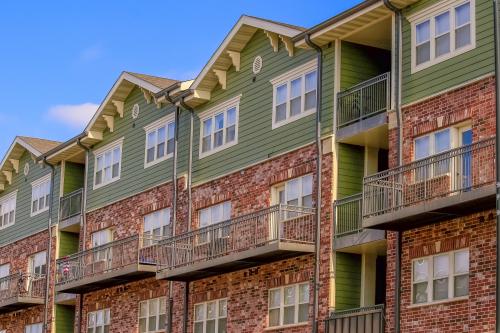The stars seem to be aligning for zoning reform in New York. In the last few weeks, two of the state’s leading politicians—moderate Governor Kathy Hochul and progressive standard-bearer Rep. Alexandria Ocasio-Cortez—have both staked out strong positions supporting land use reform. And after decades of legislative inactivity, there are suddenly multiple zoning reform bills in Albany, the state capital. This year could finally see New York grapple with its deeply entrenched and profoundly exclusionary zoning.
But how? With five separate proposals on the table, policymakers and advocates must think about the right legislative path (or better yet, paths) forward. It’s worth understanding the differences between these strategies. Exclusionary zoning isn’t just one problem, but rather an overlapping set of policies and practices that call for an overlapping set of responses.
New York has a long history of exclusionary zoning
Overly restrictive zoning imposes a slew of distinct harms. It reduces the supply and drives up the cost of housing, hurting not only individual households looking for a place to live, but also the economy as a whole. It gives people fewer choices over where to live and in what kind of home, often particularly affecting older Americans and people with disabilities. It can harm the environment, pushing people from living in climate-friendly apartments or near transit and into longer car commutes and sprawl. And restrictive zoning fuels racial and economic segregation, serving as the mechanism for exclusion and “opportunity hoarding” by wealthy, white communities.
New York, specifically, has allowed local governments to use and abuse their zoning powers, leading to problems across each of these dimensions. By some measures, the suburban counties around New York City may have the worst exclusionary zoning in the nation. Between 2010 and 2018, Nassau, Suffolk, Westchester, and Putnam counties each granted fewer building permits per capita than any suburban county in the famously “NIMBY” San Francisco Bay Area and Southern California, and fewer than any but one in Massachusetts, Connecticut, New Jersey, Pennsylvania, Maryland, and Northern Virginia. Demand is high—New York City has been a “superstar city” with a booming economy, at least pre-Covid—but it’s illegal to build homes for all the people who want to work there.
The results are sky-high housing costs that keep going up and, for many, crippling rent burdens. New York’s land use system is badly broken, with the costs disproportionately borne by low-income people and people of color. The New York region has the second-highest level of segregation between Black and white residents in the country, and the third-highest level of segregation between Latino or Hispanic and white residents as well as between Asian American and white residents. Meanwhile, downstate New York has a best-in-nation regional rail system, but transit-oriented development is illegal near most of its train stations.
For decades, New York has done almost nothing to rein in these abuses of the zoning power. Whereas states such as California, Massachusetts, New Jersey, Oregon, and even Utah have tried (with mixed success) to ensure that zoning does not impede regional growth and equity, New York abandoned any effort to do so in the early 1970s, in the face of suburban opposition to racial integration. The state’s highest court has repeatedly urged the legislature to end exclusionary zoning, but over and over again, it declined the invitation—perhaps until now.
Albany is awash in proposals for land use reform
After decades of inaction on exclusionary zoning, all of a sudden, things have changed, with support for zoning reform in both the legislature and the governor’s office. Three important zoning reform bills are now under consideration in Albany, each adopting a different strategy for rethinking land use:
- Senate Bill S7574, sponsored by Manhattan Sen. Brad Hoylman, would set robust statewide standards for local zoning. Across much of the state, the bill would legalize duplexes and four-unit buildings, allow housing to be built without unnecessary off-street parking, and permit housing to be built on small lots (the exact standards vary based on the type of local government and whether a lot is near transit). Call this a “missing middle housing” strategy.
- Senate Bill S4547A, sponsored by Sen. Pete Harckham, who represents Westchester County and parts of the Hudson Valley, and Manhattan Assembly Member Harvey Epstein, would legalize accessory dwelling units (ADUs) statewide. Modeled after California’s successful ADU legislation, the bill would require local governments to pass ordinances allowing secondary homes on residential lots, with strong protections to ensure that such ordinances actually allow ADU construction. The bill is targeted both at the legalization of existing basement apartments and the construction of new units, like backyard cottages.
- Senate Bill S7635, sponsored by Syracuse Sen. Rachel May, borrows from Massachusetts’ “anti-snob” zoning law, or Chapter 40B. Under this model, in any town where less than 10% of the housing stock is below market rent, a qualifying affordable housing development can essentially ignore local zoning rules, instead going through a special streamlined approval process. This process reduces, but does not eliminate, a locality’s power to deny a permit application, and gives a state appeals board the power to review any such denial.
In her State of the State agenda, Governor Hochul endorsed a proposal closely resembling the ADU legalization bill described above. She also proposed two additional land use reforms:
- High-density residential in New York City: Currently, state law limits the floor area ratio (a measure of density) of residential developments in New York City to 12.0, though other uses may be built more densely. Removing this cap will allow (but not require) New York City to build more dense residential uses, particularly in Manhattan.
- Transit-oriented development: While the details are still vague, Gov. Hochul’s proposal would require municipalities to rezone areas around rail transit to promote new multifamily housing development; it would also provide technical assistance to aid smaller cities in doing so effectively. This proposal may be modeled after recent changes in Massachusetts.
Overlapping problems demand overlapping solutions
Each of these proposals, if passed, would be important—and many even could prove transformative. But their effects would not be identical; each takes on different aspects of the state’s land use problem.
Accessory dwelling units, for example, are a terrific way of “gently” adding supply to the regional housing stock, with unobtrusive second units easily integrated into the existing built environment. And they’re favored as a way of allowing extended families to live together and seniors to age in place. But ADUs aren’t well suited to providing deeply affordable units; they’re often owned by individual homeowners uninterested in participating in a complex subsidy scheme, and as single units, don’t allow for cross-subsidization. And ADUs aren’t dense enough to constitute transit-oriented development.
Transit-oriented development and “anti-snob” zoning proposals would enable new multifamily construction in some of New York’s suburbs. But exactly which suburbs, and at exactly which locations, will differ. There are many locations with good transit, exclusionary zoning, and little affordable housing—but there are also low- or moderate-income communities that could still stand to build new housing near their transit stations, as well as exclusionary communities where affordable housing would be valuable even without a train station.
And of all the options on the table, only raising the floor area ratio cap is likely to cause any change in Manhattan—a location where zoning is hardly restrictive, but where the environmental (and perhaps economic) impacts of new housing are greatest. The other proposals are more focused on lower-density and suburban parts of the region.
Policymakers assessing the relative merits of each strategy must also consider which strategies offer more or less discretion for local governments, which are more easily enforced over time, and which are more politically feasible. Of course, these proposals aren’t mutually exclusive— they make each other stronger, and all move in the same direction.
Policymakers should embrace a mix-and-match approach to zoning reform
No one reform will solve the myriad problems with New York’s land use system. (And, needless to say, land use reform will not alone solve all the problems with New York’s housing system.) The best path forward is to move on multiple fronts, using some tools to allow for more density broadly and then targeting additional interventions for particular places (like near transit) and for particular developments (like affordable housing). Understanding the different and complementary roles each potential intervention plays is the key to building a new land use system for New York.
But the best bill is the one that passes—which itself is not a simple task. The time is now for advocates and lawmakers to capture this new energy for zoning reform in New York and build a winning coalition in Albany.






Commentary
New York’s ideas for zoning reform offer many paths to tackling the housing crisis
January 31, 2022